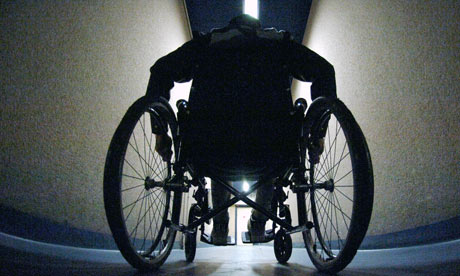‘Enda Kenny broke his promise to me’ claims Joanne O’Riordan


Outspoken disability campaigner Joanne O’Riordan has accused Taoiseach Enda Kenny of again backtracking on “his personal promise to me” that disability funding would not be cut under his rule.
Joanne, who was born with no limbs, addressed a UN technology conference in New York last year and won a string of awards for her campaigning. She said she was disgusted that “Enda Kenny looked me in the eye before the general election and promised me one thing and then once again, did another”.
Meanwhile, Kathleen Lynch, the minister with responsibility for disability issues, said she could not guarantee that those currently in receipt of the mobility allowance will be entitled to the same transport provisions when their payment stops in four months’ time.
Earlier this week, the Government decided to scrap the mobility allowance and the motorised transport grant, paid to approximately 5,000 people with disabilities. The full grant is worth €208.50 per month.
Ms Lynch said: “The people in receipt of this allowance, they use it for taxis, they use it for public transport, they use it for a range of issues… So to say that you could guarantee that they would have the same service in four months’ time as they have now, you can’t do that. What we are going to do is look at what their needs are and to ensure that those needs are met.”
Joanne’s mother Ann said she could not believe “the minister had the cheek to say she was agonising and agonising” over removing the mobility grant.
“Agonise? She doesn’t have to agonise any night. She can get into bed herself and get out of bed herself. She doesn’t need somebody to look after her the way we have to look after our children with special needs. We’re on call with the car for Joanne 24/7. I don’t go outside the door. I haven’t been outside the door since Joanne was born. I’m there for Joanne 24/7. I’m not complaining. I’d do it all over again, but don’t talk to me about agonising,” she said.
Meanwhile, an Oireachtas committee has requested the Department of Health’s top civil servant appear before it, following the axing of the mobility allowance and grant.
In a letter, the committee members said they were “increasingly concerned at the difficulties in the relationship between the ombudsman and the Department of Health”.
The chairman of the joint Oireachtas committee on public service oversight and petitions, Pádraig Mac Lochlainn, said the Department of Health “is constantly failing to learn from past mistakes” and requested Dr Ambrose McLoughlin to attend the committee next week.
“The mobility grant scheme is not the first scheme that the department has failed to roll out properly. It just can’t seem to get the design of schemes correct,” said Mr Mac Lochlainn.
The department blamed the axing of the two schemes on the burden it would put on the exchequer if they were to operate in accordance with Equal Status Acts.
The department had been repeatedly warned by Ombudsman Emily O’Reilly that by putting an upper age limit of 65 years on the schemes, they were in contravention of the legislation. Ms O’Reilly also recommended that the definition of disability under the schemes be broadened.
Five vans to be used as mobile desk Garda stations

Gardaí are to deploy five mobile Garda stations as part of the response to the closure of Garda stations around the country.
Tenders have been issued to fit out five Fiat vans with seating, power outlets, a small desk and a bell for the public.
A Garda spokesperson said the vans will be able to go to areas where stations have closed, or to public events to provide high-visibility policing.
Officers operating the vans will be able to do many of the things done in fixed stations, such as stamping passports and signing forms.
There will also be a private room within the van for conducting confidential conversations, if required.
Fianna Fáil Justice Spokesperson Niall Collins has described the mobile Garda station plan as “tokenism”.
Minister for Justice Alan Shatter has said in the past that the objective in closing the stations is to maximise the operational time available to Gardaí, increasing their mobility and visibility.
Leo Varadkar defends €70,000 spending on fine wines for VIP visits


Irish transport Minister Leo Varadkar has defended the Government’s spend of €70,000 on fine wines to replenish the cellars of the Department of Foreign Affairs.
Just one day after taking the monthly €200 mobility allowance from disabled people, it emerged that the Government had bought €77,000 worth of vino, including 24 bottles of Chateau Lynch Bages at a princely €79 a bottle.
The department said it needed to replenish stocks ahead of the EU Presidency after VIP visits by Queen Elizabeth and President Obama.
Mr Varadkar said “the Government needs to be very sensitive about what we do and how we spend money”. But he added: “At the same time, the European Presidency is a real opportunity for Ireland.
“It is important we treat visiting delegates in a way we would expect to be treated, particularly if we want them to make concessions to Ireland that are worth billions of euros.”
How dieting makes you feel guilty about food but doesn’t make you thinner


It’s long been said that diets don’t work. But now it’s been proven that women dieters do not actually cut the amount they eat – they simply end up feeling guilty about food instead.
Three studies of women found that those who were highly conscious of what they eat did not consume less calories than other women.
But women who dieted differed from women who didn’t in one area – they experienced a lot more guilt when it came to eating.
These frequent dieters seem to rob themselves of the pleasure of enjoying food and set themselves up for failure, the findings suggest.
“Despite their good intentions, restraint eaters seem to gain nothing and lose twice,” wrote the researchers from Utrecht University, Holland, in the journalPsychology & Health.
“Results indicated that restraint was not associated with food intake, but instead was associated with increased levels of guilt after eating.
“Guilt was explicitly related to food intake.”
Some 148 female undergraduates were invited to a laboratory to take part in what they thought was a food-tasting session for a supermarket chain.
They were left alone for ten minutes to sample high calorie foods such as chips and chocolate-covered peanuts and low calorie foods such as crackers and apple slices.
Next they were asked about their emotions, including guilt, and about their attitudes towards food, including how much they diet and how often they worry about what they eat.
The results showed that so-called ‘restrained eaters’ – who diet often and fret about what they eat and weight fluctuations – had eaten just as much as other women, including just as much high-calorie food.
They also felt greater guilt afterwards, especially in relation to their recent indulgence.
GALWAY SECURES A €2 MILLION GRANT, UNDER SOCIAL HOUSING INVESTMENT PROGRAMME FOR 2013
A total of 2.5 million euro has been allocated to the city and county as part of the government Social Housing Investment Programme for 2013.
It’s part of a national funding pot of 275 million euro to be shared between 34 City and County Councils nationwide, announced by Minister Jan O’Sullivan today (Mar 1).
As part of the programme, Galway City is to receive over 462 thousand towards social housing supply and a further 247 thousand under the improvement works programme.
The county has secured over 1.5 million euro towards social housing supply and 255 thousand as part of the improvement works programme.
A Star Is Born? No, But Maybe a Planet


Astronomers have spotted what they believe is a planet in the dramatic and violent process of being born in another solar system, an event that may shed light on how planets come into being.
Astronomers say they may have spotted a possible planet in the dramatic and violent process of being born, an event that may shed light on how large, gaseous planets come into being. Gautam Naik reports on Lunch Break. Photo: AFP/European Southern Observatory.
An international team of researchers said the so-called proto-planet has a mass that appears to be at least the size of Jupiter, and perhaps two to three times its size. It is located about 335 light years from Earth, within the Milky Way. That isn’t too far in cosmic terms; the Milky Way itself is about 100,000 light years across.
“If we are correct, this is the first time we are seeing a planet forming inside its natal environment,” said Sascha Quanz, an astronomer at the Swiss university ETH Zurich and leader of the team. The findings are reported in Astrophysical Journal Letters, a scientific publication.
There are two leading theories of planet formation. Under one, small dust grains circling around a parent star collide, get larger and larger, and under the force of gravity develop into a much larger object. Over hundreds of thousands of years, this object accumulates enough material to become a planet. That is how the planets of our solar system most likely formed.
Another theory suggests that material surrounding a young star can undergo gravitational collapse under its own mass. This causes debris to clump together in that region, creating a planet in just a few thousand years. It isn’t clear how the latest suspected protoplanet is being formed.
Spotting the earliest birth pangs of a planet is notoriously hard. In 2011, astronomers said they had discovered a protoplanet, though some signs indicated it was an older entity. In January, another team of researchers reported evidence of vast streams of gas flowing across a gap in a disk of material around a young star. Giant planets, they surmised, would guzzle gas in a similar way as they grow.
If it holds up, the latest finding would be one of the first direct observations of the very early stages of a planet’s birth. Dr. Quanz and colleagues based their discovery on observations by a high-resolution infrared camera linked to a telescope located in Chile’s Atacama Desert.
The telescope was pointed at a young star, HD 100546, about 2.5-times the size of our sun. Astronomers were interested in the star because the disk of materials around it showed certain asymmetries. “It’s a good indication that something might be hiding or forming in the disk,” said Dr. Quanz.
The infrared imagery revealed a little bright blob in the disk, suggesting an entity emitting radiation. When the picture of the blob was laid over an image of the asymmetry, they coincided perfectly. The conclusion: The blob was an object embedded in the material around the star, suggesting a nascent planet.
The protoplanet would take tens of thousands of years to grow up. But scientists still hope to study the entity and glean insights into how it was created and how it might evolve. “We can try to find out the chemical and physical properties of the disk that causes a planet to form there,” said Dr. Quanz.
No comments:
Post a Comment